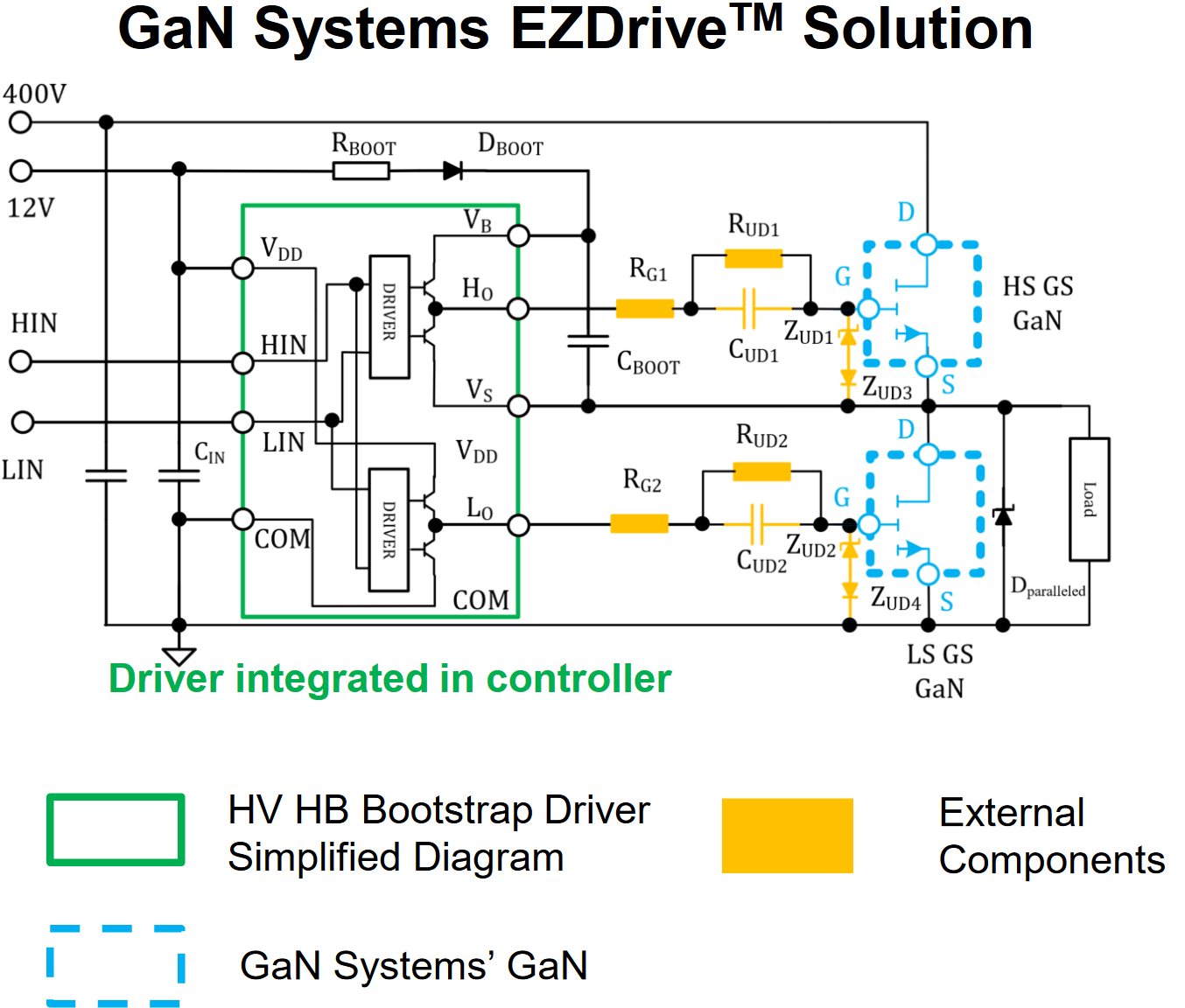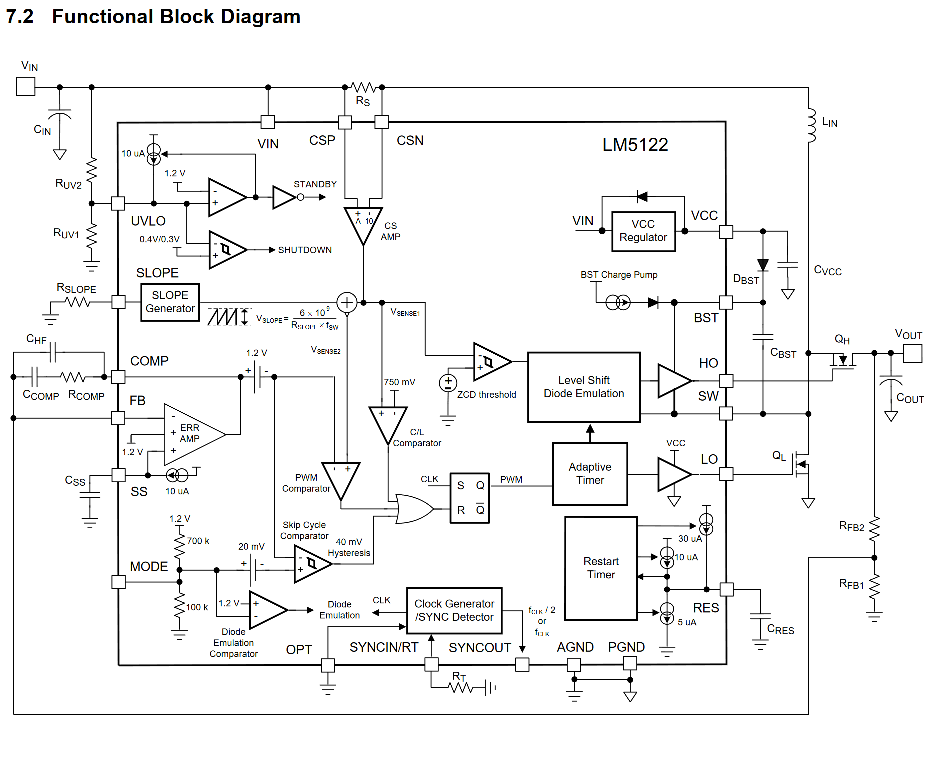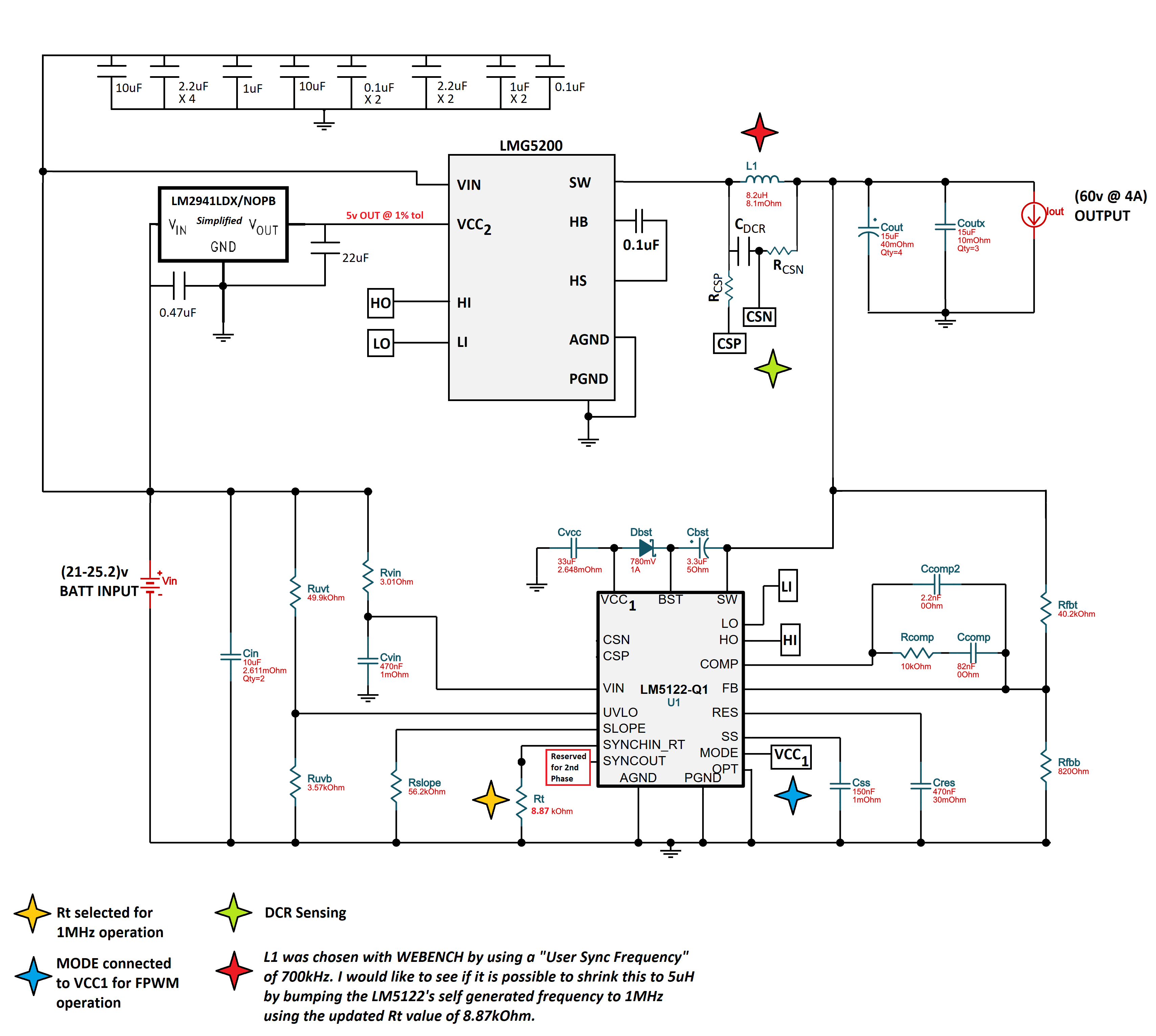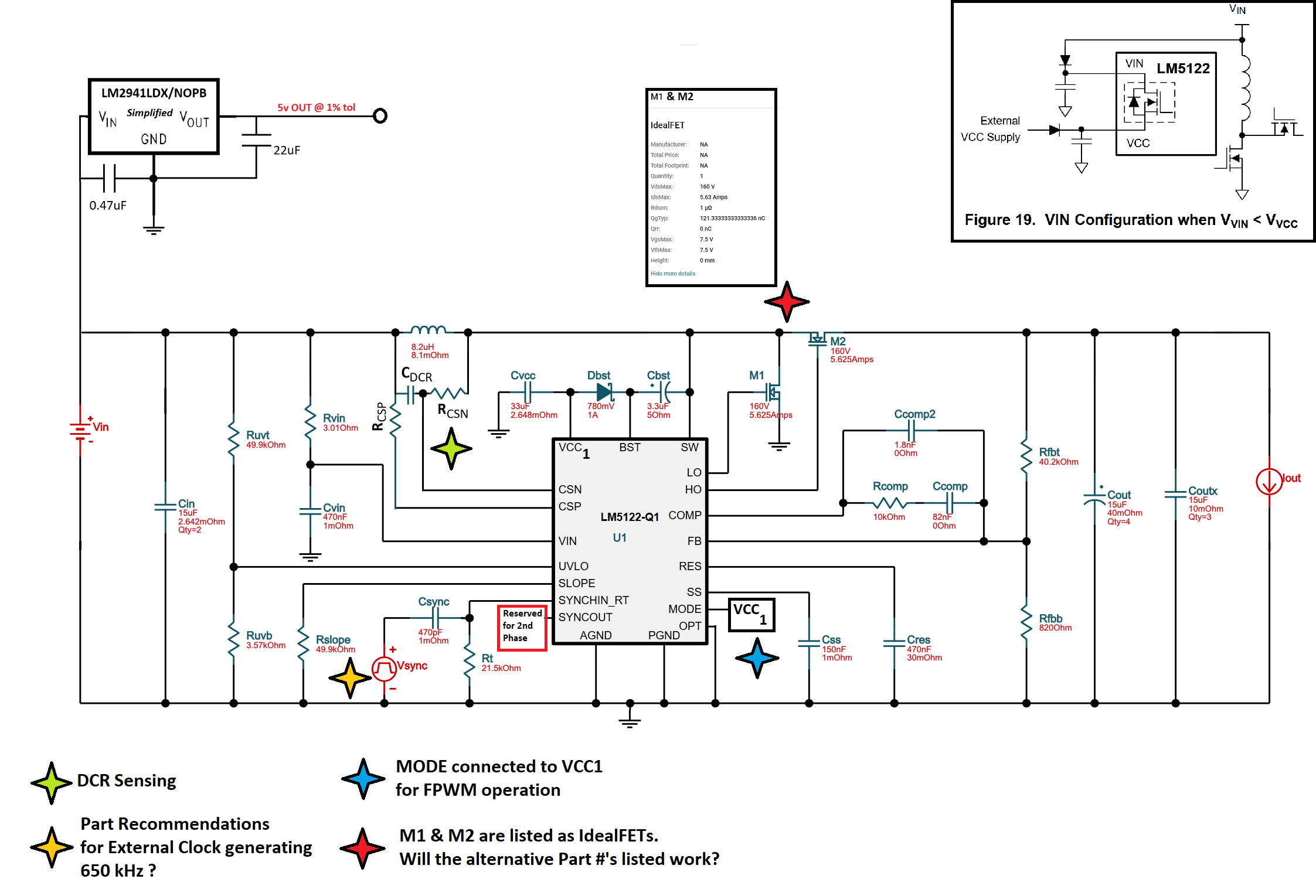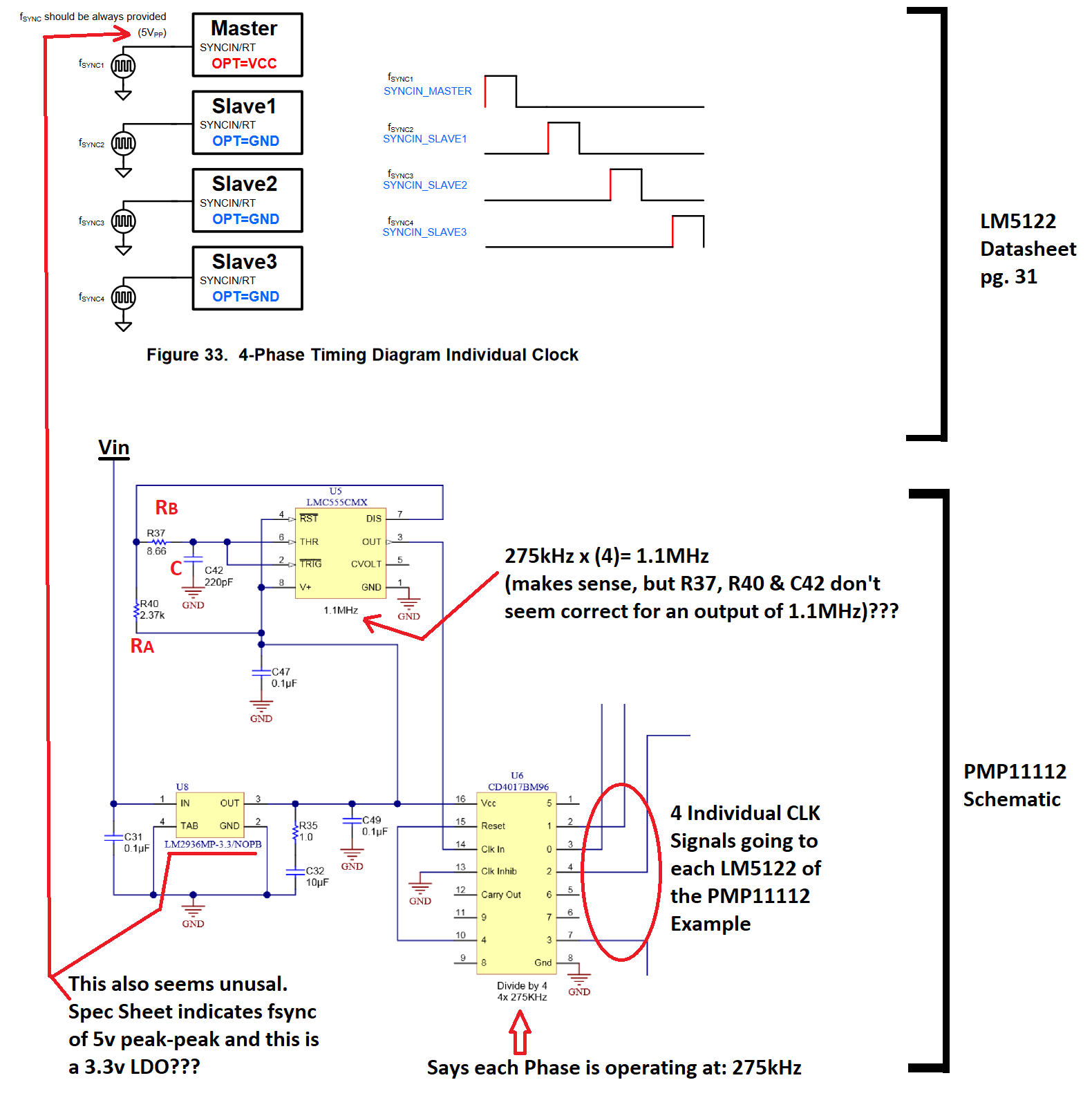Other Parts Discussed in Thread: LM5121-Q1, LM5122, LM5121, LMG5200, LM5114, LMG5200EVM-02, LMG1210, LM51561, LMC555, PMP11112
Hi,
I'm trying to select an appropriate Boost Converter for a new product design. The design input uses (6) 18650 Li-Ion cells in series with the pack specification below:
Battery Spec:
Output pack voltage = (21 - 25.2)vDC
Nominal pack voltage = 22.2vDC
Continuous pack current= 30A
----------------------------------------------
I'm looking for the following output:
Boost Spec:
Output voltage = 65vDC
Output current = 7.5 to 8 Amps
I need this design to be a small as possible and have large heat-sinking options. With that in mind, I've identified (2) Controllers that may work the LM5122-Q1 OR LM5121-Q1. So my questions are:
1) Are the (2) Controllers I've identified the best for this application
2) I've started a Webench design with the LM5122-Q1, but it doesn't look as though you can run a multi-phase design using this tool. I think this application might require such a design.
Please let me know your initial thoughts.
-Thank You,


